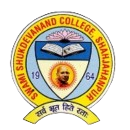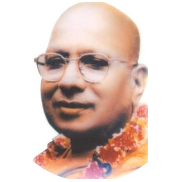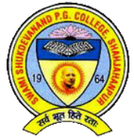Introduction

- With an aim for raising a second line of defence and to create a large pool of trained youth available for Armed Forces during the First World War, University Corps was conceptualized by the British Government. In India, NCC was raised with an aim of grooming both the boys and the girls, nurture them and direct their energy towards nation building by making them responsible citizens.
- After independence, the present day NCC formally came into existence on 15 July 1948 through XXXI Act of Parliament. The Girls Division of the NCC was raised in July 1949. On 01 April 1950, Air Wing was raised, with one Air squadron each at Bombay and Kolkata. The Naval Wing of the NCC was raised in July 1952, thus representing all three services in the Corps.
- Today the NCC has an enrolled strength of more than 13 Lakh cadets and consists of two divisions of all the three Services, i.e., the Senior Division / Senior Wing for boys/girls from colleges and the Junior Division / Junior Wing for boys/girls from schools. The Motto of NCC is ‘Unity and Discipline’.
Aims of NCC
The aims of NCC are mainly three-fold:-
-
- To develop following qualities in the cadets:-
- Character.
- Comradeship.
- Discipline.
- Secular Outlook.
- Spirit of Adventure.
- Ideals of selfless service.
- To create a human resource of organised, trained and motivated youth, to provide leadership in all walks of life who will serve the nation regardless of which career they choose.
- To provide an environment conducive to motivating young Indians to choose the Armed Forces as a career.
- To develop following qualities in the cadets:-
Objectives of NCC
- Train volunteer youth to become confident, committed and competent leaders in all walks of life.
- Enhance awareness levels of cadets to become responsible citizens of the country.
- Provide opportunities and encourage cadets to enrich their knowledge, develop communication skills and build character.
- Conduct social activities and community development programmes, to make constructive contributions toward society.
- Undertake adventure activities to hone leadership qualities and risk-taking abilities.
- Provide a platform to launch “Goodwill Ambassadors” to project the image of country overseas.
- Conduct military training to develop awareness about Armed Forces, leadership skills and military values thus, provide an environment to motivate cadets to join the Armed Forces.
Organisation of NCC
- The NCC is a voluntary organisation which is administered through the Ministry of Defence. The Defence Minister is overall in charge, and responsible to the Government of India for efficient functioning of the NCC and other matters.
- The NCC Headquarters is situated in New Delhi, headed by an officer of the rank of Lieutenant General who is responsible for the smooth functioning of the NCC in the country.
- There are 17 Directorates located in the state capitals headed by an officer of the rank of a Major General / Brigadier or equivalent from the three Services. According to the size of the state and growth of NCC in the states, Directorates have up to 14 Group Headquarters under them through which they exercise their command and control over the organisation in the state. Each group is headed by an officer of the rank of Brigadier /Colonel or equivalent known as Group Commander.
- Each NCC Group Headquarters controls 5-7 NCC units / battalions, commanded by Colonel / Lieutenant Colonel or equivalent. Each battalion consists of companies which are commanded by the Associate NCC Officers (ANO) of the rank of Lieutenant, Captain or Major. In all, there are 99 Group Headquarters in the country who exercise control over a network of 700 Army Wing Units (including technical and girls’ unit), 73 Naval Wing Units and 64 Air Squadrons.
- There are two training academies namely Officers Training Academy, Kamptee for men and Officers Training Academy, Gwalior for ladies where professors and teachers from colleges and schools are specially trained to impart training to the cadets as Associate NCC Officers (ANOs).
- NCC is staffed by the following:-
(a) Regular officers drawn from the three services.
(b) Whole Time Lady Officers (WTLO) from NCC.
(c) Associate NCC officers (ANOs), who are professors and teachers.
(d) Girl Cadet Instructors (GCI) from NCC.
(e) Permanent Instructional (PI) Staff from Army, Navy and Air Force.
(f) Civilian Gliding Instructors and Ship Modelling Instructors.
(g) Civilian Staff. - Good and organized training is an important part of NCC and hence it is given due importance. The corps has achieved success through its well-regulated system of rigorous training which includes Basic, Advanced and Specialized training, with more stress on training camps.
- Training activities of NCC can be broadly divided as under:-
(a) Institutional Training. Training organized in schools and colleges as parades.
(b) Camp Training. Formal training organized as camps of 10-12 days duration.
(c) Attachment Training. Formal training organized by attachment with Army / Naval / Air Force units or with officer training academies like Indian Military Academy (IMA) and Officers Training Academy (OTA).
(d) Naval Wing Activities. Seamanship, Navigation, Communication and other associated naval subjects are taught to cadets. Swimming, Scuba Diving and Wind Surfing are other interesting activities to which the cadets are exposed to. 3
(e) Air Wing Activities. Airmanship, Aero modelling, Navigation, Air Frames, Aero Engines and Microlite Flying are taught to cadets.
(f) Remount & Veterinary Activity. This activity is primarily meant for horsemanship and riding.



